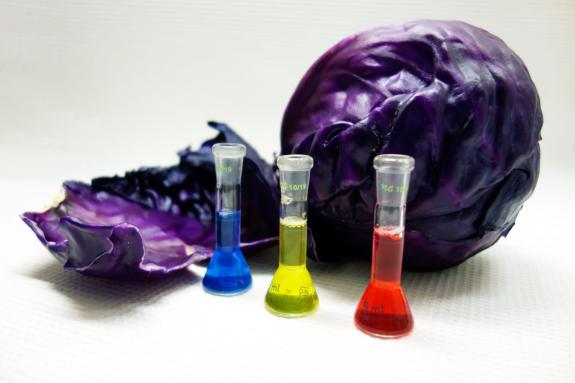The color of red cabbage depends on the pH value. The pH value of a substance or food indicates how acidic or alkaline it is on a scale of 1-14. If the pH value is low, this is referred to as an acidic pH value, as is the case with vinegar, for example. Substances whose pH value is greater than 7 are referred to as basic or alkaline. This applies to soap, for example. Water has a neutral pH value of 7.
The color of a food can also depend on the pH value. For example, red cabbage is also known as blue cabbage in other parts of Germany. This is because the soil in which the cabbage grows is alkaline in some places. The plant is then bluish in color. If the soil is acidic, the cabbage leaves appear reddish. Cooking also affects the color of red cabbage. If vinegar is added, the cabbage turns red. If nothing acidic is added during cooking, the cabbage turns purple. This effect is caused by anthocyanins. These are colorants in plants that belong to the secondary plant substances. They change color depending on the pH value. They not only give red cabbage its color, but also many berries such as blueberries or currants.
The experiment investigates how the addition of various common household substances with different pH values affects the color of red cabbage extract.

